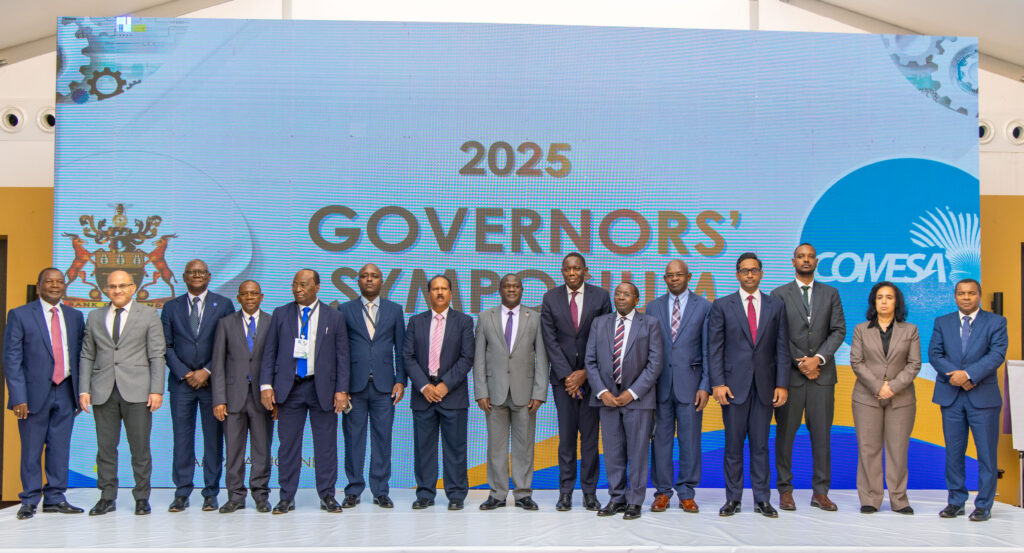
Global shocks are tightening the world’s supply chains and sparking volatile commodity prices, underscoring a fragile global economy. For COMESA, a resource-rich region dependent on exports, the impact is significant. Yet resilience emerges when intra-regional trade and coordinated monetary and financial systems are strengthened to transform volatility into strength.
Despite a dip in overall trade, COMESA has shown steady performance, with intra-COMESA exports at about US$14 billion in both 2022 and 2023. This consistency reveals robust regional ties and a solid foundation for growth and deeper integration. The region’s export potential is vast—estimated at US$101.1 billion annually—while intra-COMESA trade remains only 6% of total trade, signaling substantial room to expand.
This was revealed and discussed during the 2025 COMESA Central Bank Governors Symposium held in Kampala, Uganda on Thursday 20 November 2025.
The Governors noted that unlocking this (trade) potential requires concerted action. They must push for enhanced regional sourcing to build resilience against external shocks, while addressing production constraints and expanding market information. A regional trade information system and product catalogue could streamline the flow of quality goods across borders, supported by tailor-made production lines that meet Member States’ demand.
Beyond physical trade, the African continental Free Trade Area (AfCFTA) was named as being a key enabler. It enlarges markets, spurs cross-border investment in infrastructure and stimulates services trade, all while serving as a shock absorber against global turbulence. There was a common agreed that stronger regional markets also attract investment and support industrial development.
“’We as Central banks play a pivotal role. Traditionally tasked with price stability, today we are architects of financial ecosystems. Stable, well-regulated financial systems—credit, trade finance and cross-border payment mechanisms—are essential to sustaining intra-COMESA trade and investment flows,” the Governors added “When banks and capital markets function smoothly, small traders and exporters gain access to finance and opportunities, boosting regional competitiveness,”
In summary, they all agreed that a resilient COMESA hinges on robust macroeconomic policy, vibrant regional trade and empowered financial institutions. With decisive action, central banks can anchor a more connected, prosperous and self-reliant COMESA.
The Symposium had two Panel Discussion sessions whose topics where:-
“Central Banking and Global Shocks: Conduct of Monetary Policy in the Times of Crisis and Positioning Monetary Policy for Dealing with Commodity Booms and Busts” and “Assessing Financial sector Stability and Resilience To Exogenous Shocks in the COMESA Region.”
The Governor of the Central Bank of Uganda and Chairperson of the COMESA Committee of Central Bank Governors Dr Michael Atingi-Ego and the Assistant Secretary General for Administration and Finance at COMESA Secretariat Dr Dev Haman officially opened the Symposium.

